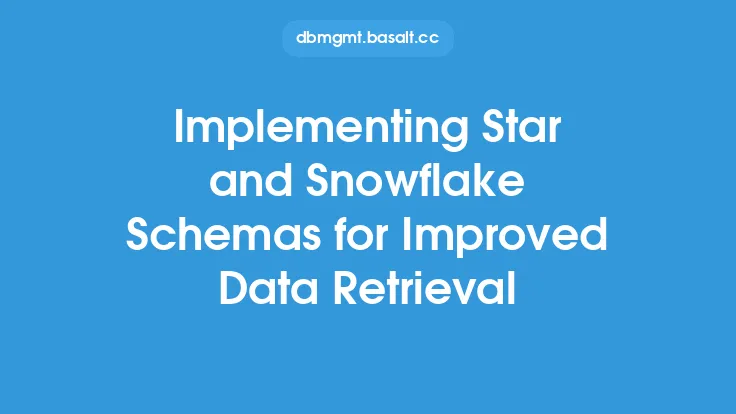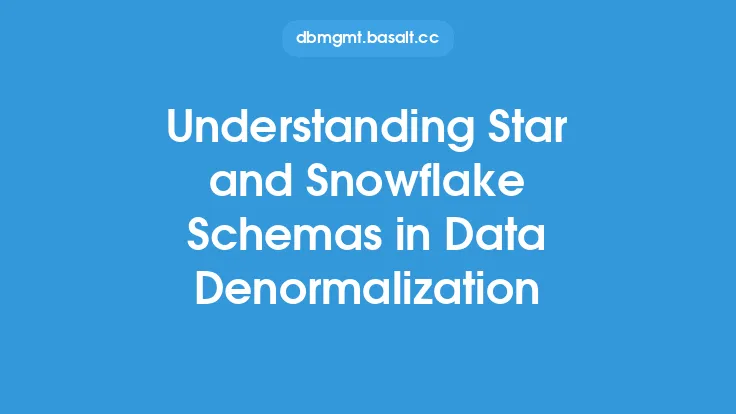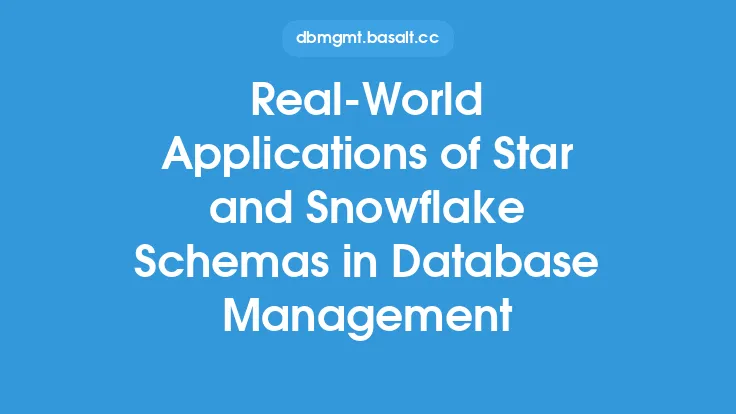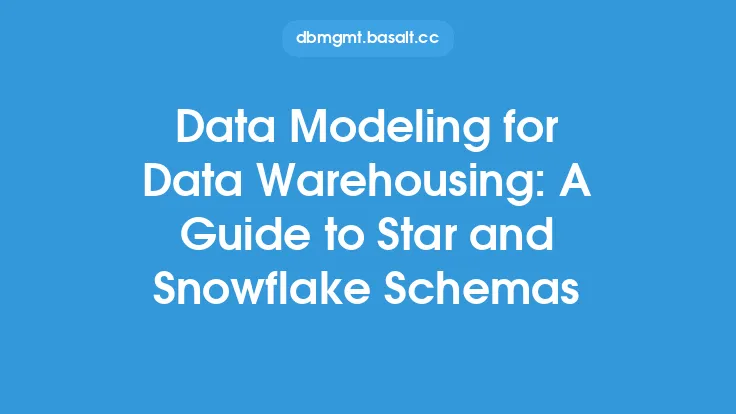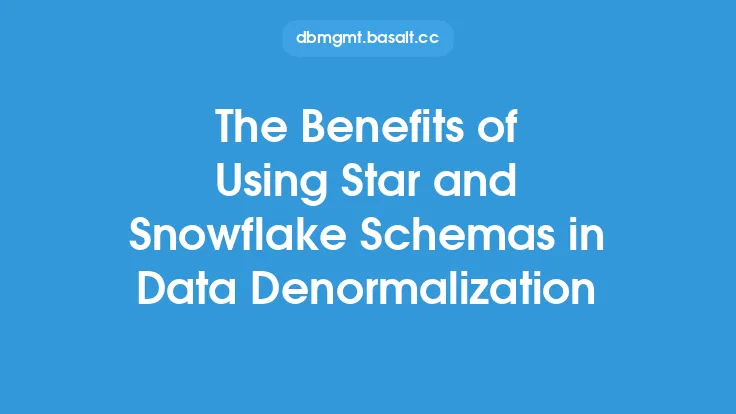When it comes to optimizing data storage and retrieval, two popular schema designs come to mind: star and snowflake schemas. These schemas are used in data warehousing to improve query performance and reduce data redundancy. In this article, we will delve into the details of how star and snowflake schemas can be used to optimize data storage and retrieval.
Introduction to Star Schemas
A star schema is a database schema design that consists of a central fact table surrounded by dimension tables. The fact table contains the main data, while the dimension tables provide additional information about the data. The star schema is called so because the dimension tables are connected to the fact table like the points of a star. This design allows for fast query performance and efficient data retrieval. The fact table typically contains a large number of rows, while the dimension tables contain a smaller number of rows.
Introduction to Snowflake Schemas
A snowflake schema is an extension of the star schema design. In a snowflake schema, each dimension table is further normalized into multiple related tables. This design is called so because the dimension tables are connected to each other like the intricate patterns of a snowflake. The snowflake schema is more complex than the star schema, but it provides better data integrity and reduces data redundancy. However, it can also lead to slower query performance due to the increased number of joins required.
Optimizing Data Storage with Star and Snowflake Schemas
Both star and snowflake schemas can be used to optimize data storage by reducing data redundancy and improving data integrity. In a star schema, the fact table contains the main data, while the dimension tables provide additional information about the data. This design allows for fast query performance and efficient data retrieval. In a snowflake schema, the dimension tables are further normalized into multiple related tables, which provides better data integrity and reduces data redundancy.
Optimizing Data Retrieval with Star and Snowflake Schemas
Star and snowflake schemas can also be used to optimize data retrieval by improving query performance. In a star schema, the fact table contains the main data, while the dimension tables provide additional information about the data. This design allows for fast query performance and efficient data retrieval. In a snowflake schema, the dimension tables are further normalized into multiple related tables, which provides better data integrity and reduces data redundancy. However, the increased number of joins required in a snowflake schema can lead to slower query performance.
Choosing Between Star and Snowflake Schemas
When it comes to choosing between star and snowflake schemas, there are several factors to consider. Star schemas are simpler and provide faster query performance, but they can lead to data redundancy and poor data integrity. Snowflake schemas, on the other hand, provide better data integrity and reduce data redundancy, but they can lead to slower query performance due to the increased number of joins required. The choice between star and snowflake schemas ultimately depends on the specific needs of the organization and the type of data being stored.
Best Practices for Implementing Star and Snowflake Schemas
There are several best practices to keep in mind when implementing star and snowflake schemas. First, it's essential to understand the data and the queries that will be run against it. This will help determine the optimal schema design and ensure that the data is properly normalized. Second, it's crucial to use efficient join techniques, such as using indexes and optimizing join orders. Finally, it's essential to regularly monitor and maintain the schema to ensure that it continues to meet the needs of the organization.
Common Challenges and Solutions
There are several common challenges that can arise when implementing star and snowflake schemas. One of the most significant challenges is data redundancy, which can occur when the same data is stored in multiple tables. To solve this problem, it's essential to use efficient data normalization techniques, such as using surrogate keys and avoiding data duplication. Another common challenge is slow query performance, which can occur when the schema is not properly optimized. To solve this problem, it's essential to use efficient join techniques, such as using indexes and optimizing join orders.
Real-World Examples of Star and Snowflake Schemas
Star and snowflake schemas are used in a variety of real-world applications, including data warehousing, business intelligence, and big data analytics. For example, a retail company might use a star schema to store sales data, with a fact table containing sales information and dimension tables containing information about products, customers, and stores. A financial services company might use a snowflake schema to store financial data, with a fact table containing financial information and dimension tables containing information about accounts, customers, and transactions.
Conclusion
In conclusion, star and snowflake schemas are powerful tools for optimizing data storage and retrieval. By understanding the strengths and weaknesses of each schema design, organizations can make informed decisions about which schema to use and how to implement it. By following best practices and using efficient join techniques, organizations can ensure that their schema is properly optimized and meets their needs. Whether you're working with a star schema or a snowflake schema, the key is to understand the data and the queries that will be run against it, and to use efficient techniques to optimize data storage and retrieval.
